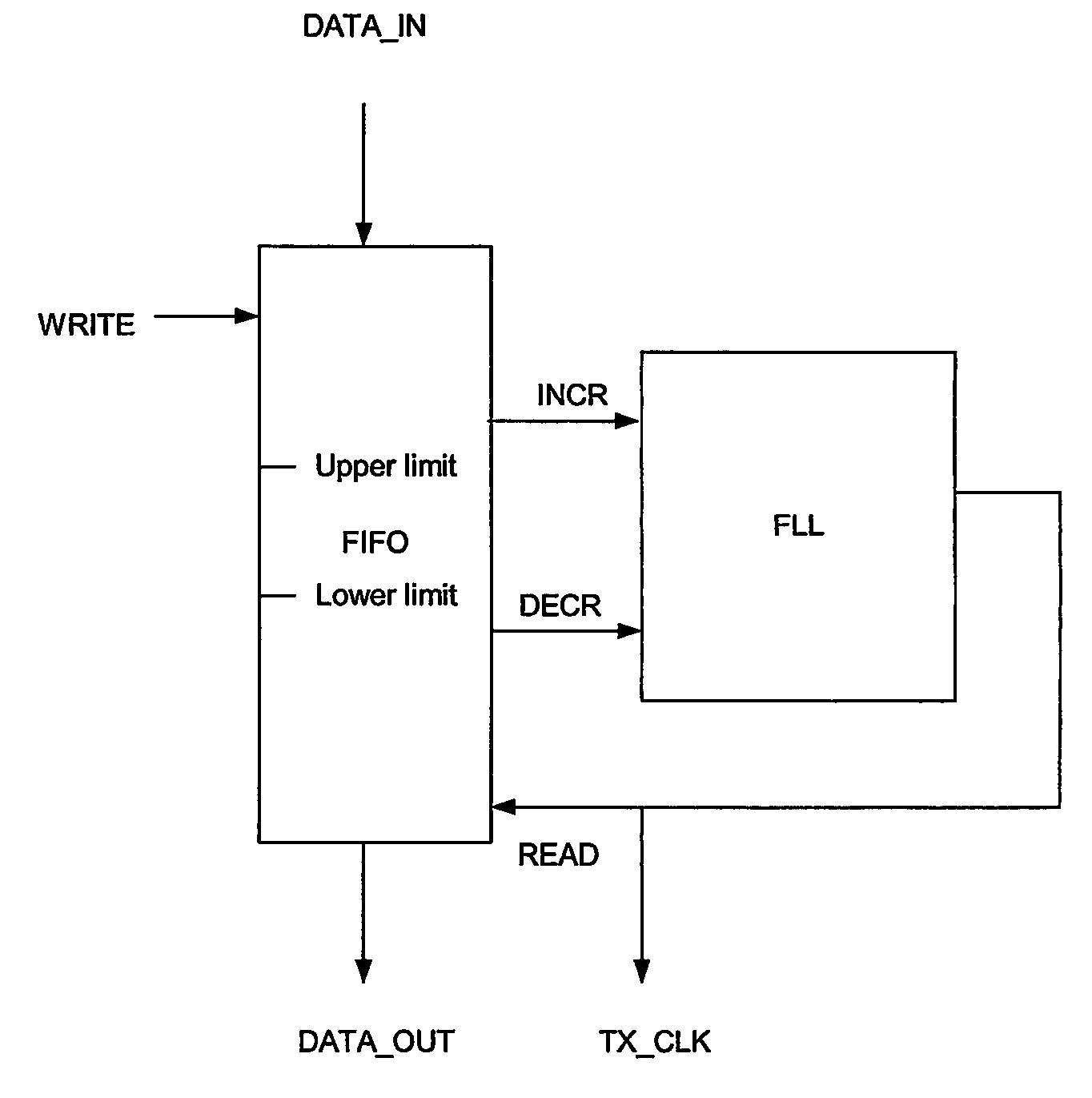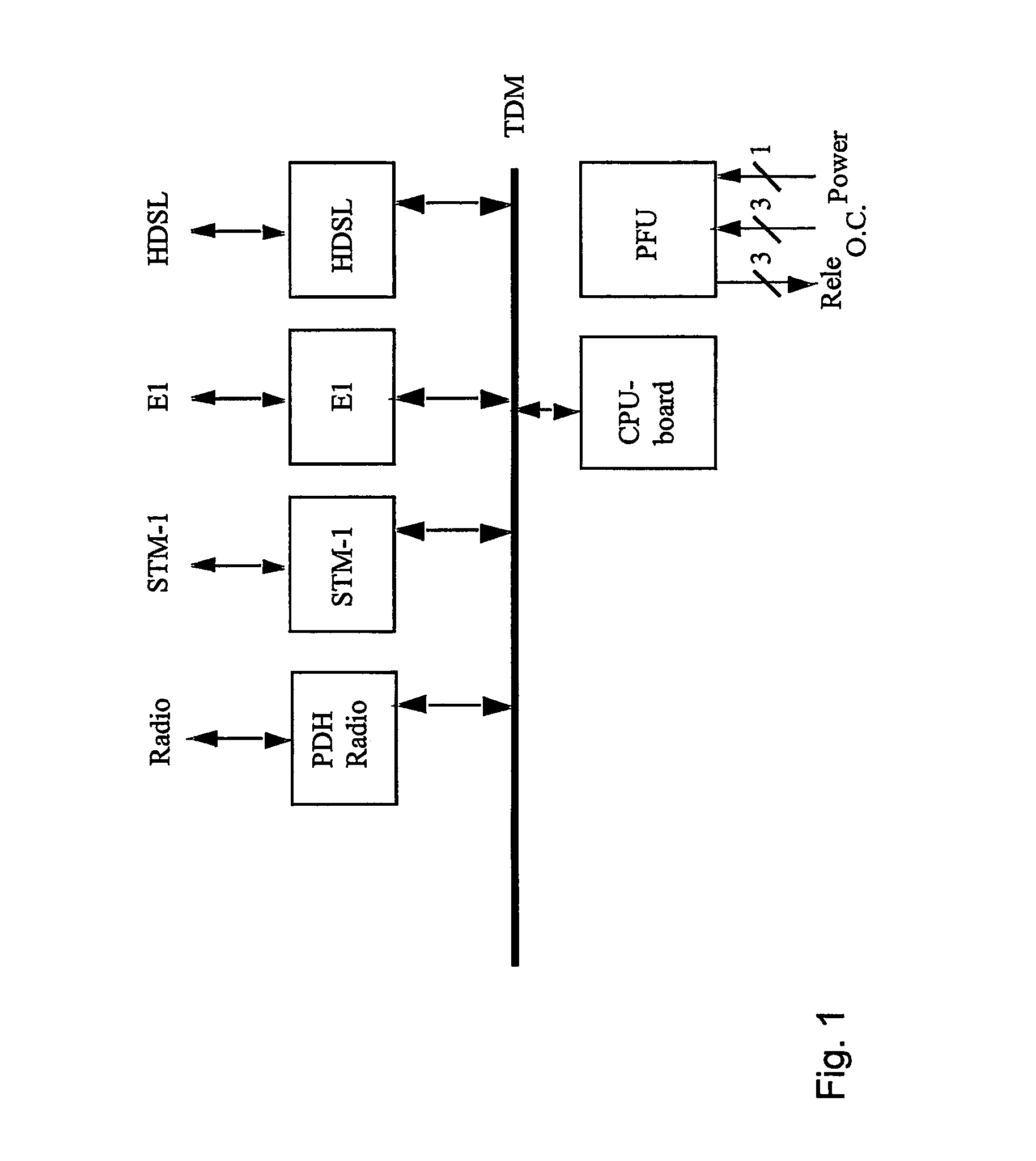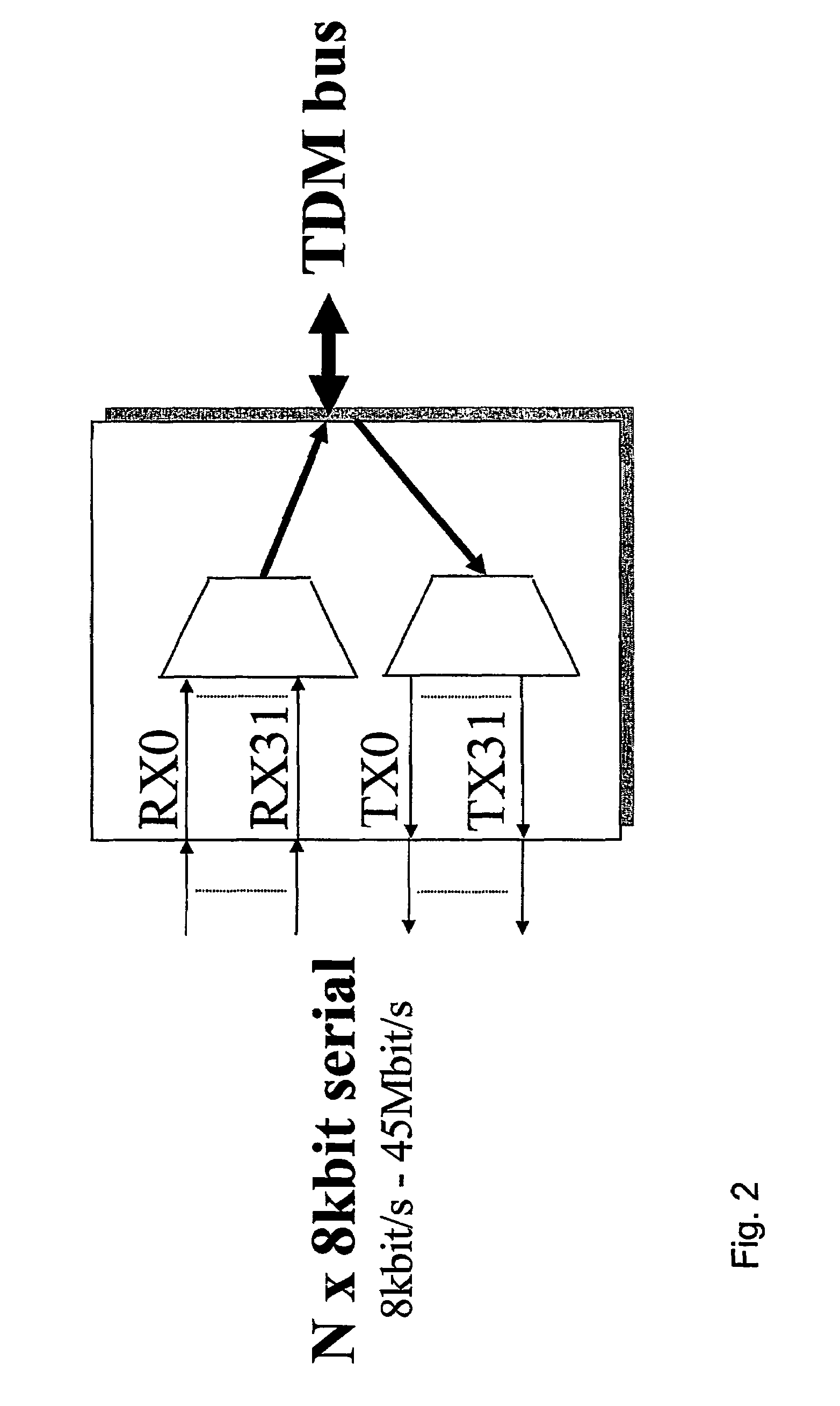Rate adaption within a TDM switch using bit stuffing
a tdm switch and rate adaptation technology, applied in the field of data nodes in communication networks, can solve the problems of unstable fll, inability to transmit data with the data clock, and very limited number of output frequencies, so as to prevent the introduction of bit loss, improve the jitter and frequency stability, and improve the effect of fll stability
- Summary
- Abstract
- Description
- Claims
- Application Information
AI Technical Summary
Benefits of technology
Problems solved by technology
Method used
Image
Examples
Embodiment Construction
[0042]In order to achieve bit transparent pipes with independent timing, the present invention proposes a method inserting a certain header in each frame before transmission on the TDM bus. Also according to the present invention, a FIFO for each output port at the transmitting side of the switch is regulated with inventive regulation circuits.
[0043]At the receiving side of the switch there is a FIFO for each input port with a programmable depth, e.g. 64 bits, and the serial data of the input lines is clocked into the FIFOs. An example of such FIFO can be, seen in FIG. 4. As it can be seen from FIG. 4, the FIFO depth may be less than the actual physical size. It should be possible to reset the FIFO pointer to a mid-position. This is preferably done automatically when there is an overflow or underflow error in the FIFO, or the software programmer can do it at any time.
[0044]The abovementioned header is, i.a., used for bit stuffing. Bit stuffing in this context is used to compensate f...
PUM
 Login to View More
Login to View More Abstract
Description
Claims
Application Information
 Login to View More
Login to View More - R&D
- Intellectual Property
- Life Sciences
- Materials
- Tech Scout
- Unparalleled Data Quality
- Higher Quality Content
- 60% Fewer Hallucinations
Browse by: Latest US Patents, China's latest patents, Technical Efficacy Thesaurus, Application Domain, Technology Topic, Popular Technical Reports.
© 2025 PatSnap. All rights reserved.Legal|Privacy policy|Modern Slavery Act Transparency Statement|Sitemap|About US| Contact US: help@patsnap.com



